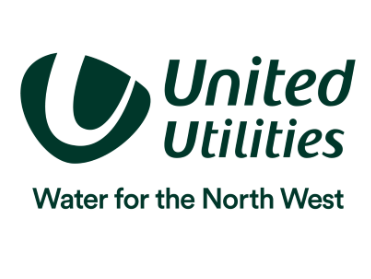The Environment Agency intends to progressively issue new and modified permits to ensure Best Available Techniques (BAT) are adopted for around 120 anaerobic digestion (AD) installations used to treat sewage sludge currently being operated by water companies.

The measure form part of the Agency newly-published Methane Action Plan for 2024 to 2028 setting out out how the environmental regulator will use its powers and share knowledge and good practice to reduce methane emissions in the UK and internationally. Methane will be made a priority pollutant under the Plan.
The plan also includes an anaerobic digestion (AD) improvement programme – the EA is reviewing the leak detection and repair (LDAR) reports to develop consistent reporting requirements from the sector. The Agency will collate the data to estimate losses and drive improvements. LDAR requirements are also being added to environmental permits as part of the permit review programmes. We will keep appropriate measures relevant in assessing this data and seek improvements as evidence presents.
Municipal sludge treatment by water companies typically utilises AD as a treatment technique. There are around 120 such facilities in England and which will be permitted as installations by March 2025. The Agency said it is working with water companies to ensure this happens.
Once permitted then BAT will apply, and the EA can regulate to ensure compliance with requirements such as preventing or reducing fugitive emissions by covering open post-digestion storage (with collection and use of currently fugitive biogas) and requiring LDAR.
In 2022 the UK signed the Global Methane Pledge to collectively reduce global methane emissions by at least 30% by 2030 compared to 2020 levels.
Methane represented 14% of total UK greenhouse gas (GHG) emissions in 2022, with the agriculture, waste and fuel supply sectors contributing around 49%, 30% and 8% to that total respectively.
The EA said the main objectives of the new plan include:
- improve the data of sectors we regulate to support better decisions and targeted action by improving how methane is measured, monitored, reported and modelled
- maximise the effectiveness of our regulation to enable and encourage operators to reduce methane emissions and maximise utilisation efficiency:
- reduce and where possible prevent emissions from sectors we regulate for methane losses, such as landfill sites, and anaerobic digestors operating under Environmental Permitting Regulations (EPR)
The Agency intends to create a national database to hold emissions data from the industrial activities we regulate to enable better forecasts and insights into trends and to measure the effectiveness of our regulation.
Measures for monitoring and modelling standards will include the use of techniques such as Optical Gas Imaging (OGI) equipment and quantification equipment for sites that the Agency regulates for methane emissions.
The EA is also developing and testing new methods for quantifying fugitive emissions from operational landfills using a whole site approach to inform improvements in landfill gas recovery and utilisation.
Other measures set out in the plan include:
- Review all permits to ensure BAT are consistent for installations and appropriate measures for waste operations are up to date across sectors where appropriate via permit review.
- Prioritise permit reviews based on greatest impact for emission savings.
- Encourage improvements across industry in design of equipment and assets for example standards, certification, and maintenance supported by better data.
Click here for more information about the Environment Agency Methane Action Plan for 2024 to 2028.


 Attendees at next month’s National Civils Show, Floodex, National Drainage Show and Waterways Management on 26th and 27th November are set to benefit from an expert speaker line-up and the opportunity to visit a wide range of exhibitors all co-located in one place at Excel, London, one of the UK’s leading international exhibition and convention centres.
Attendees at next month’s National Civils Show, Floodex, National Drainage Show and Waterways Management on 26th and 27th November are set to benefit from an expert speaker line-up and the opportunity to visit a wide range of exhibitors all co-located in one place at Excel, London, one of the UK’s leading international exhibition and convention centres. Tackling leakage is one of the fastest and most cost-effective ways for utilities to bolster water security, writes Ben Crabtree, Product Line Director, Ovarro, revealing how the potential of smart technologies is being demonstrated around the world.
Tackling leakage is one of the fastest and most cost-effective ways for utilities to bolster water security, writes Ben Crabtree, Product Line Director, Ovarro, revealing how the potential of smart technologies is being demonstrated around the world. Balfour Beatty, the UK’s largest construction and infrastructure provider, has delivered exceptional environmental results on the Thames Estuary Asset Management 2100 (TEAM2100) framework, one of the nation’s most ambitious flood defence initiatives.
Balfour Beatty, the UK’s largest construction and infrastructure provider, has delivered exceptional environmental results on the Thames Estuary Asset Management 2100 (TEAM2100) framework, one of the nation’s most ambitious flood defence initiatives.

 Hear how United Utilities is accelerating its investment to reduce spills from storm overflows across the Northwest.
Hear how United Utilities is accelerating its investment to reduce spills from storm overflows across the Northwest. What is to be done about the UK’s failing utilities? Listen to Professor Dieter Helm explore the options to tackle the UK’s failing utilities – Thames Water, the Royal Mail and Network Rail in particular.
What is to be done about the UK’s failing utilities? Listen to Professor Dieter Helm explore the options to tackle the UK’s failing utilities – Thames Water, the Royal Mail and Network Rail in particular.